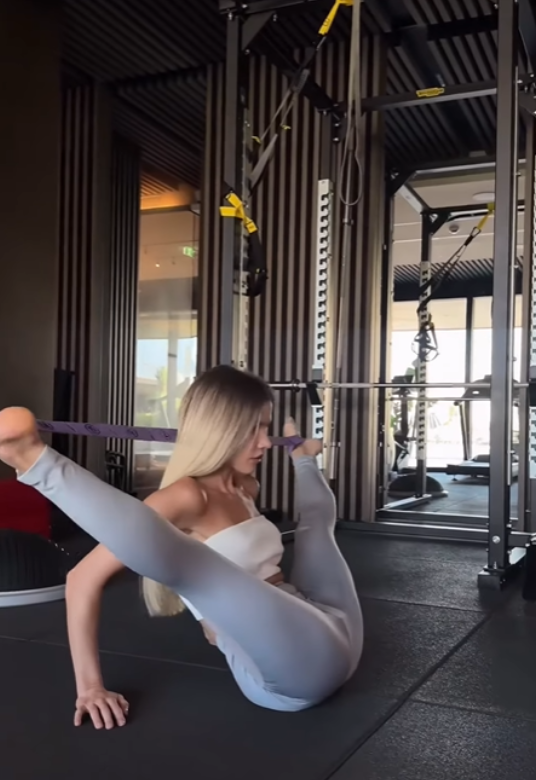
Stretching is an essential component of any fitness routine, but for those looking to take their flexibility to the expert level, gym stretching becomes an advanced practice. Unlocking an expert level of flexibility requires dedication, precision, and a deep understanding of body mechanics. This guide explores techniques, benefits, and the best ways to incorporate expert-level stretching into your gym sessions.

Why Flexibility Matters
Flexibility enhances overall movement efficiency, reduces the risk of injuries, improves posture, and increases blood flow to muscles. Expert-level flexibility allows athletes, dancers, yogis, and fitness enthusiasts to perform at their peak while minimizing strain on the body. Moreover, increased flexibility leads to better mobility, making everyday activities easier and reducing muscular tightness.
Dynamic vs. Static Stretching
Before jumping into advanced stretching techniques, it’s essential to understand the two primary types of stretching: dynamic and static.
- Dynamic Stretching involves controlled movements that improve range of motion, activate muscles, and prepare the body for exercise. Examples include leg swings, arm circles, and torso twists.
- Static Stretching requires holding a stretch for an extended period (typically 15–60 seconds) to increase flexibility and lengthen muscles. Examples include the seated hamstring stretch, butterfly stretch, and splits.
Both forms play a crucial role in an expert stretching routine.
Preparing for Expert-Level Stretching
To avoid injury, warm-up is key. A proper warm-up increases muscle temperature, improves circulation, and enhances tissue elasticity. Consider incorporating:
- Light Cardio (5-10 minutes of jogging, cycling, or jumping rope)
- Foam Rolling to release muscle tension
- Dynamic Stretches to prime muscles for deeper flexibility work
Expert-Level Gym Stretching Techniques
1. The Advanced Forward Fold
- Stand with feet hip-width apart.
- Slowly bend at the waist, reaching for the floor.
- Engage the core and try to place hands flat on the ground.
- Hold for 30–60 seconds, deepening the stretch by pulling the torso closer to the legs.
2. Pigeon Pose for Deep Hip Flexibility
- Start in a push-up position.
- Bring the right knee forward, placing it behind the right wrist.
- Extend the left leg straight behind, keeping the hips square.
- Lower the upper body onto the forearms or fully lay down.
- Hold for 60 seconds and repeat on the other side.
3. Wall-Assisted Splits
- Sit against a wall and extend the legs outward into a split position.
- Use the wall for support and push the legs open gradually.
- Hold for 60 seconds, trying to increase the stretch slightly each time.
4. Shoulder Bridge Stretch
- Lie on your back with knees bent and feet hip-width apart.
- Push through the heels and lift the hips toward the ceiling.
- Interlace fingers under the back and press shoulders into the floor.
- Hold for 30–60 seconds, engaging the glutes and back muscles.
5. Deep Chest Opener on Stability Ball
- Sit on a stability ball and slowly roll backward until the back is fully supported.
- Extend the arms outward and let them drop towards the floor.
- Relax into the stretch and hold for 60 seconds.
6. Standing Quad Stretch with Resistance Band
- Stand tall and loop a resistance band around one ankle.
- Pull the band overhead to stretch the quad deeper.
- Hold for 30–60 seconds on each side.
7. Hanging Spinal Decompression
- Grab a pull-up bar and let the body hang freely.
- Relax the shoulders and allow gravity to stretch the spine.
- Hold for 30 seconds, repeating twice.
Tips for Maximizing Flexibility Gains
- Stretch Daily – Consistency is key to achieving expert-level flexibility.
- Breathe Deeply – Inhale deeply to relax muscles and improve stretch depth.
- Listen to Your Body – Avoid pushing beyond discomfort into pain.
- Incorporate Strength Training – Building strength supports flexibility progress.
- Stay Hydrated – Muscles require hydration to function optimally and remain supple.
Common Mistakes to Avoid
- Skipping Warm-Up – Cold muscles are more prone to injury.
- Holding Breath – Holding your breath can restrict movement and cause stiffness.
- Overstretching – Going too far too fast can lead to strains.
- Ignoring Pain Signals – Discomfort is normal; sharp pain is not.
- Neglecting Recovery – Rest and recovery are crucial for muscle elasticity.
The Mental Aspect of Expert-Level Flexibility
Flexibility training is not just about physical ability; it requires mental discipline. Practicing mindfulness, visualization, and patience enhances stretching efficiency. Many elite athletes use mental imagery to visualize deeper stretches and improved range of motion.
Conclusion
Unlocking expert-level flexibility in the gym takes dedication, consistency, and knowledge of advanced stretching techniques. By integrating dynamic and static stretches, warming up properly, and maintaining proper form, you can achieve greater mobility, reduce injury risk, and improve overall athletic performance. Whether you’re an athlete, a yogi, or someone seeking greater mobility, the journey to expert flexibility is a rewarding one.



